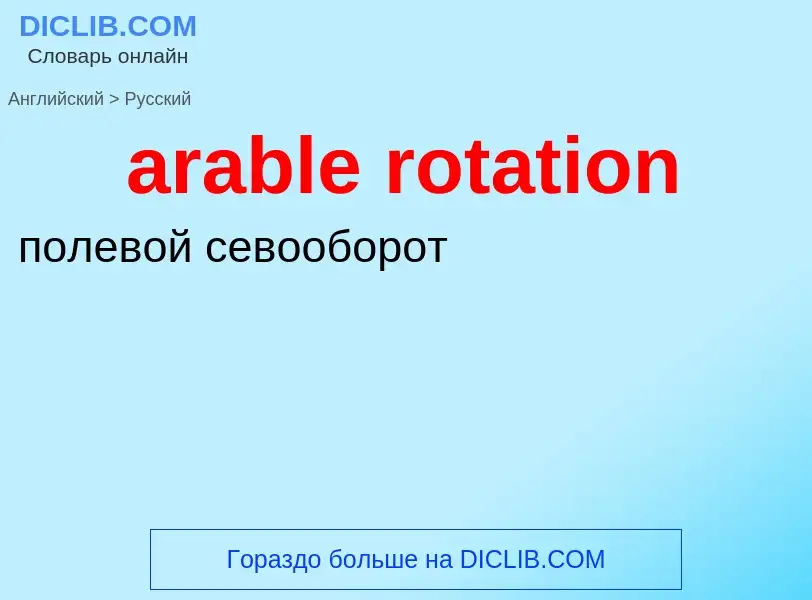Translation and analysis of words by ChatGPT artificial intelligence
On this page you can get a detailed analysis of a word or phrase, produced by the best artificial intelligence technology to date:
- how the word is used
- frequency of use
- it is used more often in oral or written speech
- word translation options
- usage examples (several phrases with translation)
- etymology
arable rotation - translation to russian
[rəu'teiʃ(ə)n]
общая лексика
вращение
чередование
севооборот
ротация
смена (культур)
вихрь
вращательное движение
вращательный
кругооборот
кругообращение
периодическое повторение
поворачивание
поворот
ротор
собственное вращение
физиология
круговорот
строительное дело
угол поворота (сечений)
существительное
общая лексика
вращение
оборот
чередование
периодическое повторение
перемещение по кругу (кораблей в круговом ордере)
спорт
чередование игроков
военное дело
замена личного состава или частей
сельское хозяйство
севооборот
ротация
лесное дело
оборот рубки
гидрология
вихрь
Definition
Wikipedia

Arable land (from the Latin: arabilis, "able to be ploughed") is any land capable of being ploughed and used to grow crops. Alternatively, for the purposes of agricultural statistics, the term often has a more precise definition:
Arable land is the land under temporary agricultural crops (multiple-cropped areas are counted only once), temporary meadows for mowing or pasture, land under market and kitchen gardens and land temporarily fallow (less than five years). The abandoned land resulting from shifting cultivation is not included in this category. Data for 'Arable land' are not meant to indicate the amount of land that is potentially cultivable.
A more concise definition appearing in the Eurostat glossary similarly refers to actual rather than potential uses: "land worked (ploughed or tilled) regularly, generally under a system of crop rotation".In Britain, arable land has traditionally been contrasted with pasturable land such as heaths, which could be used for sheep-rearing but not as farmland.
Arable land is vulnerable to land degradation and some types of un-arable land can be enriched to create useful land. Climate change and biodiversity loss, are driving pressure on arable land.

![fields]] like this one in [[Dorset]], England fields]] like this one in [[Dorset]], England](https://commons.wikimedia.org/wiki/Special:FilePath/040719 172 dorset marnhull2.jpg?width=200)
![A pasture in the [[East Riding of Yorkshire]] in England A pasture in the [[East Riding of Yorkshire]] in England](https://commons.wikimedia.org/wiki/Special:FilePath/Beverley Minster from West Pasture.jpg?width=200)
![Fields in the region of [[Záhorie]] in [[Western Slovakia]] Fields in the region of [[Záhorie]] in [[Western Slovakia]]](https://commons.wikimedia.org/wiki/Special:FilePath/Chvojnica hills near Unin.jpg?width=200)


![plane of orbit]] and [[axial tilt]] (for Earth). plane of orbit]] and [[axial tilt]] (for Earth).](https://commons.wikimedia.org/wiki/Special:FilePath/AxialTiltObliquity.png?width=200)



